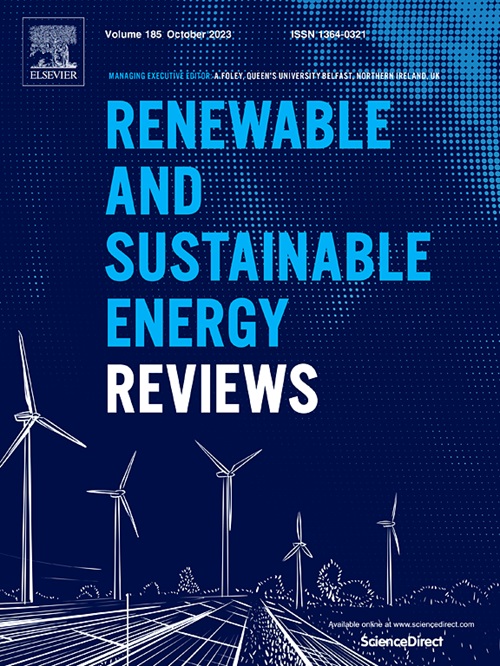A novel prescriptive approach for buildings’ insulation design considering embodied carbon
IF 16.3
1区 工程技术
Q1 ENERGY & FUELS
引用次数: 0
Abstract
The reduction of energy consumption and environmental impact of buildings is critically important. Thermal insulation is highly effective in reducing energy needs. Therefore, national policies have regulated and encouraged insulation retrofits. Their environmental convenience depends on the carbon footprint of the materials used and the carbon density of the energy consumed. However, this is not usually reflected in prescriptions, and no studies have tried to formulate practical solutions for this integration. This work proposes a prescriptive approach based on Type-III declarations of materials and the carbon footprint of thermal energy to improve the environmental convenience and feasibility of retrofits. The life cycle environmental balance of thermal insulation retrofits is first investigated with a simplified analytical model. Then, the analytical model is applied to a parametric case study. The effect of natural hazards on maintenance-related emissions is also considered, an aspect quite unexplored in the literature. The results demonstrated that the impact of the embodied carbon is significant, especially considering future realistic low-carbon energy scenarios and the impact of a natural hazard on the needed maintenance. The proposed approach, conceived to be applicable in current practices, allows for a reduction of the minimum thermal resistance of the opaque envelope by up to 33% in the case of low embodied carbon materials and low carbon density heating technologies. The novel approach can still deliver energy savings of more than 60% and reduce the life cycle emissions and materials required, opening new perspectives for more sustainable and holistic regulations in the building sector.

求助全文
约1分钟内获得全文
求助全文
来源期刊

Renewable and Sustainable Energy Reviews
工程技术-能源与燃料
CiteScore
31.20
自引率
5.70%
发文量
1055
审稿时长
62 days
期刊介绍:
The mission of Renewable and Sustainable Energy Reviews is to disseminate the most compelling and pertinent critical insights in renewable and sustainable energy, fostering collaboration among the research community, private sector, and policy and decision makers. The journal aims to exchange challenges, solutions, innovative concepts, and technologies, contributing to sustainable development, the transition to a low-carbon future, and the attainment of emissions targets outlined by the United Nations Framework Convention on Climate Change.
Renewable and Sustainable Energy Reviews publishes a diverse range of content, including review papers, original research, case studies, and analyses of new technologies, all featuring a substantial review component such as critique, comparison, or analysis. Introducing a distinctive paper type, Expert Insights, the journal presents commissioned mini-reviews authored by field leaders, addressing topics of significant interest. Case studies undergo consideration only if they showcase the work's applicability to other regions or contribute valuable insights to the broader field of renewable and sustainable energy. Notably, a bibliographic or literature review lacking critical analysis is deemed unsuitable for publication.
 求助内容:
求助内容: 应助结果提醒方式:
应助结果提醒方式:


